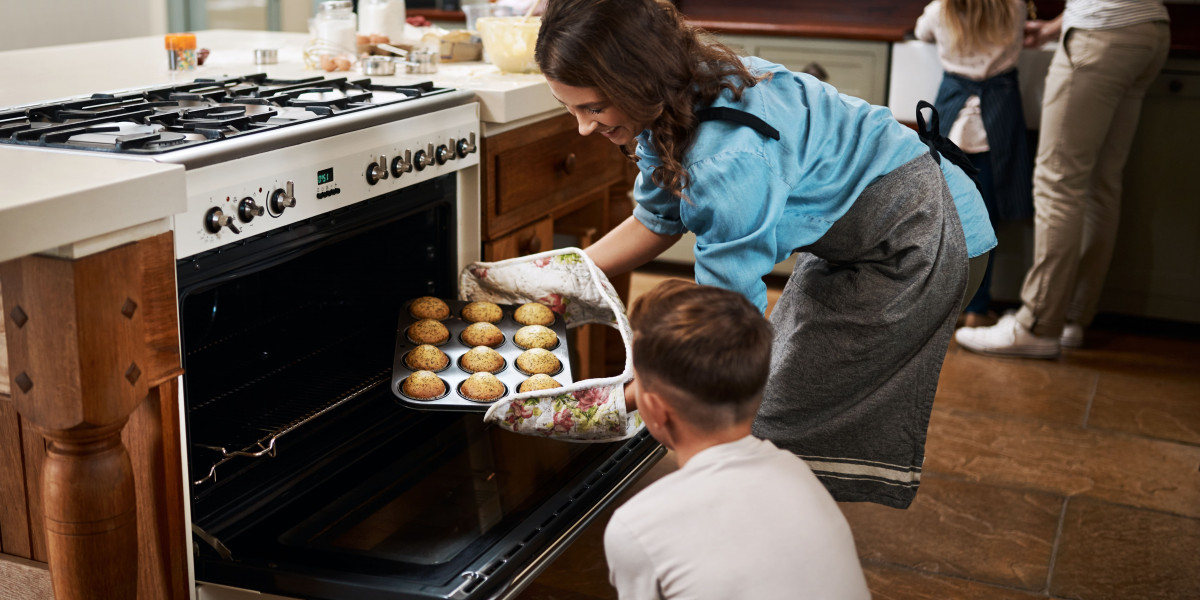The Comprehensive Guide to Built-In Cookers and Hobs
Built-in cookers and hobs have ended up being increasingly popular in modern kitchens, providing both functionality and visual appeal. These integrated appliances, designed to fit seamlessly into kitchen cabinetry, take full advantage of space while enhancing the cooking experience. This post will explore the various kinds of built-in cookers and hobs, their advantages, maintenance ideas, and regularly asked questions.
Understanding Built-In Cookers and Hobs
Built-in cookers usually include ovens, while hobs refer to the cooking surface area that can include numerous heating aspects such as burner, electric coils, or induction zones. When combined, these 2 appliances produce an effective and streamlined cooking setup.

Types of Built-In Cookers and Hobs
When selecting a built-in cooker and hob, it's necessary to understand the numerous types readily available. Here's a comprehensive table comparing the main types:
| Type | Description | Pros | Cons |
|---|---|---|---|
| Gas Hob | Utilizes gas as a fuel source. | Quick heat modification, culinary control. | Requires gas line setup. |
| Electric Hob | Utilizes electric coils or strong plate heating. | Typically cheaper, simple to tidy. | Slower to heat and cool down. |
| Induction Hob | Utilizes electro-magnetic energy for cooking. | Fast heating, energy-efficient, safe. | Costly, requires suitable cookware. |
| Built-In inbuilt oven | Can be electric, gas, or combination. | Versatile cooking options, numerous sizes. | Fixed area, prospective installation complexity. |
Benefits of Built-In Cookers and Hobs
Space-Saving Design: Built-in units save area by integrating seamlessly into the kitchen layout, leaving more room for storage and counter tops.
Visual Appeal: They offer a streamlined and contemporary look, elevating the style of any kitchen.
Personalization: With many styles and configurations, homeowners can select appliances that best match their cooking habits and kitchen dimensions.
Improved Functionality: Built-in cookers often come with sophisticated features such as self-cleaning options, several cooking modes, and programmable timers.
Security Features: Modern hobs include features like automatic shut-off and child locks, boosting safety in the kitchen.
Upkeep Tips for Built-In Cookers and Hobs
To guarantee the durability and optimum efficiency of built-in cookers and hobs, appropriate upkeep is vital. Below are essential upkeep suggestions:
Regular Cleaning: Wipe spills and stains immediately to avoid them from solidifying or ending up being more difficult to clean up.
Usage Appropriate Cleaning Supplies: Avoid abrasive products that can scratch surfaces. Use cleaner specifically created for the kind of device you have.
Examine Gas and Electrical Connections: Regular evaluations can prevent leakages and ensure optimal efficiency.
Calibrate Temperature Settings: If you see disparities in cooking temperature levels, consider recalibrating the oven.
Schedule Professional Servicing: Annual check-ups can help identify and rectify minor problems before they escalate.
Choosing the Right Built-In Cooker and Hob
When selecting a built-in cooker and hob, numerous factors should be considered:
1. Cooking Preferences:
- If you take pleasure in fast temperature changes, a gas hob might be ideal.
- For energy performance and consistent cooking, induction hobs are preferred.
2. Kitchen Size:
- Consider the area readily available for setup. Step cabinets and other appliances to ensure the selected system fits comfortably.
3. Design and Design:
- Opt for styles that match your kitchen's design. Built-in systems can be found in various surfaces, such as stainless-steel, Cookology COF600BK 60cm Black Electric Oven - Buy Now!, or customized cabinetry.
Bosch Serie 4 Built-in Oven with 3D Hotair. Budget plan:
- Establish a budget that consider purchase expenses, installation costs, and long-lasting operating expenditures.
5. Brand name Reputation:
- Research credible brand names understood for reliability and customer support. Checking out evaluations and looking for suggestions can also be useful.
Often Asked Questions (FAQs)
Q1: Are built-in cookers and hobs more expensive than standard units?A1: Generally, built-in cookers and hobs can be more pricey upfront due to installation and style. However, they might provide long-lasting savings through energy effectiveness.
Q2: Can I set up a built-in cooker or hob myself?A2: While some may be installed by property owners, it is typically suggested to work with an expert, especially for gas or complex electrical connections, to ensure safety and compliance with regional codes.
Q3: What is the average life-span of built in Electric oven and hob-in cookers and hobs?A3: With correct care, built-in cookers and hobs can last anywhere from 10 to 15 years. Regular maintenance can extend their life.
Q4: Is it possible to integrate various types of hobs with the same oven?A4: Yes, many kitchens include a mix of hobs (e.g., gas and induction) together with a built-in oven, enabling versatile cooking choices.
Q5: How do I understand if my hob is energy-efficient?A5: Look for energy effectiveness ratings and think about induction hobs, which generally offer exceptional energy efficiency compared to gas or conventional electric hobs.
Built-in cookers and hobs use a mix of modern design and advanced cooking technology, improving any kitchen's functionality and design. By comprehending the various types offered, their benefits, and upkeep needs, homeowners can make informed choices when purchasing these necessary kitchen appliances. With correct choice and care, built-in cookers and hobs can offer years of enjoyable cooking and a seamless kitchen experience.









